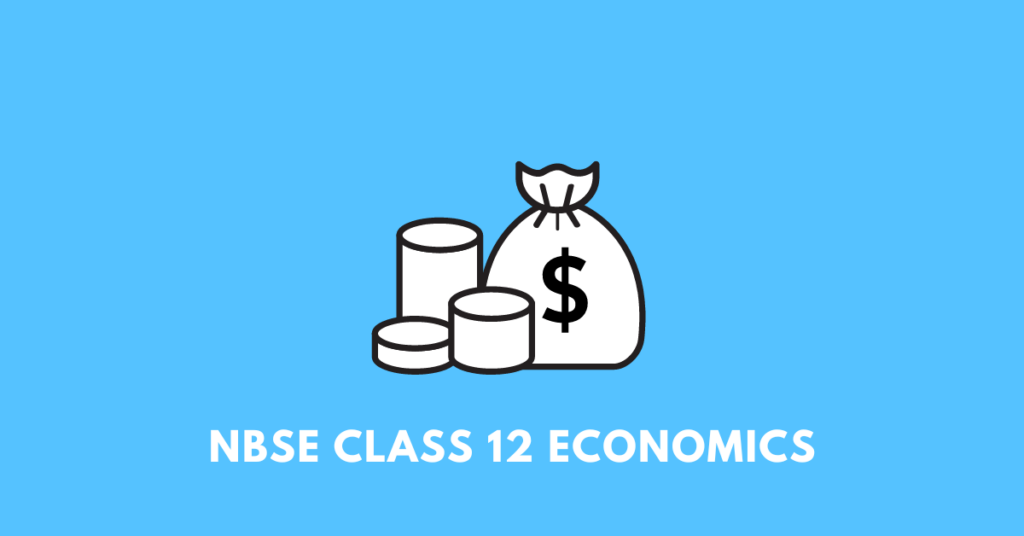Here, you will find summaries, questions, answers, textbook solutions, pdf, extras etc. of (Nagaland Board) NBSE Class 12 Economics syllabus (Arts and Commerce). These solutions, however, should be only treated as references and can be modified/changed. Please select the subject/chapter and proceed.
| PART I: Macro Economics |
| Chapter 1 Introduction |
| Chapter 2 Circular Flow of Income |
| Chapter 3 National Income and Related Aggregates: Basic Concepts |
| Chapter 4 National Income: Measurement |
| Chapter 5 Aggregate Demand and Its Components |
| Chapter 6 Short-Run Equilibrium Output |
| Chapter 7 Money |
| Chapter 8 Banking |
| Chapter 9 Fiscal Policy and Monetary Policy |
| Chapter 10 Government Budget |
| PART II: Indian Economic Development |
| Chapter 1 Indian Economy on the Eve of Independence |
| Chapter 2 Features, Problems and Policies of Agriculture and Foreign Trade |
| Chapter 3 Structural Changes |
| Chapter 4 Poverty in India |
| Chapter 5 Rural Development-Key Issues |
| Chapter 6 Human Capital Formation in India |
| Chapter 7 Employment-Growth and Other Issues |
| Chapter 8 Environmental and Sustainable Development |
| Chapter 9 Economic Planning in India |
| Chapter 10 Economic Growth and Development |
| Chapter 11 India and China: Development Experiences |
About NBSE Class 12 Economics textbook for Arts and Commerce
The NBSE Class 12 Economics textbook is a comprehensive guide designed to provide students with a thorough understanding of both macroeconomics and Indian economic development. The textbook is divided into two main parts, each focusing on a different aspect of economics.
Part A, titled “Macro Economics,” is allocated 80 marks and is further divided into five units. Each unit focuses on a different topic, including an introduction to macroeconomics, national income and related aggregates, the theory of income and employment, money and banking, and monetary policy, fiscal policy, and government budget. The units are designed to provide students with a solid foundation in macroeconomic concepts and theories, including business cycles, aggregate demand and supply, consumption and capital goods, and the functions of money and banking.
Part B, titled “Indian Economic Development,” also consists of five units. These units delve into the intricacies of the Indian economy, covering topics such as structural changes post-liberalization, current challenges facing the Indian economy, planning and economic development in India, and economic growth and development. This part of the textbook provides students with a deep understanding of the Indian economy’s evolution, current state, and future prospects.
In addition to the main content, the textbook also includes an internal assessment section worth 20 marks. This section includes project work or group activities, formal tests, assignments, and a student’s internal assessment portfolio. The project work offers a range of topics, from the effects of changing interest rates on automobile sales to the impact of globalization on family lives.
The textbook also provides guidelines for assessment, ensuring that students understand how their learning outcomes will be evaluated. These guidelines cover formal testing, assignments, and project work, providing a clear framework for both teachers and students.

Ron’e Dutta is a journalist, teacher, aspiring novelist, and blogger. He manages Online Free Notes and reads Victorian literature. His favourite book is Wuthering Heights by Emily Bronte and he hopes to travel the world. Get in touch with him by sending him a friend request.
Get notes of other boards, classes, and subjects
